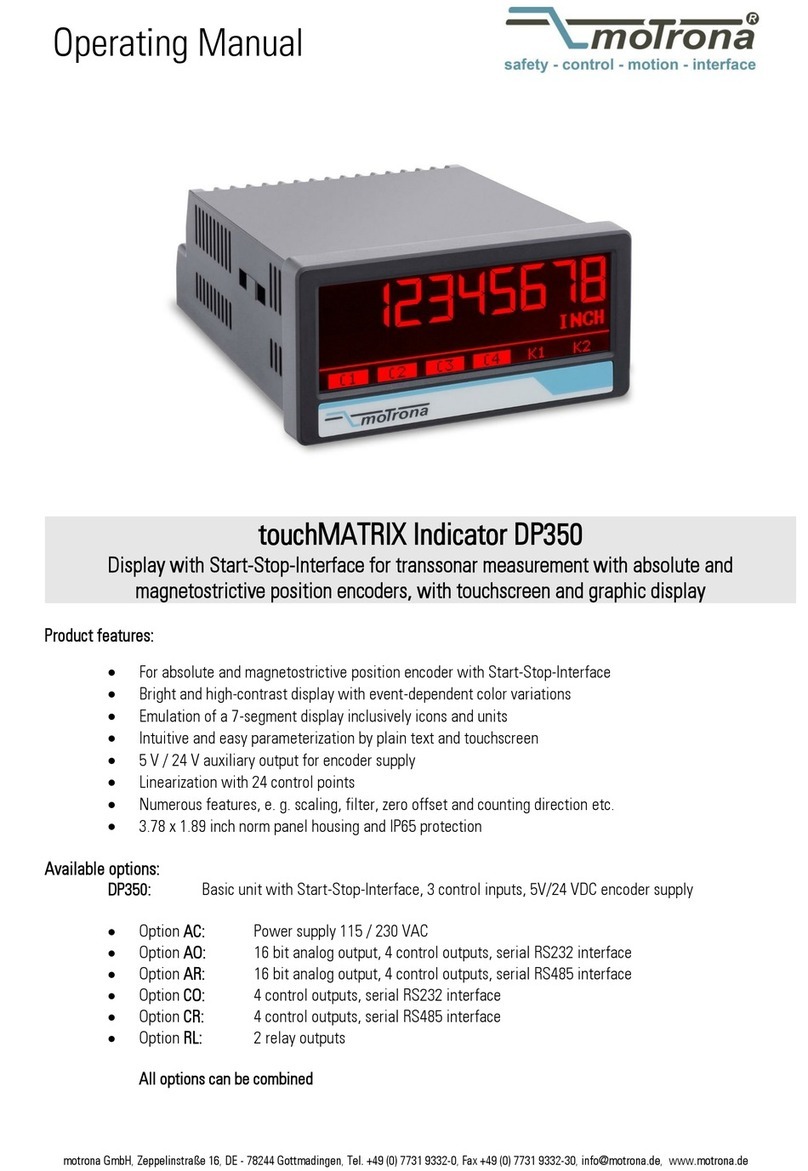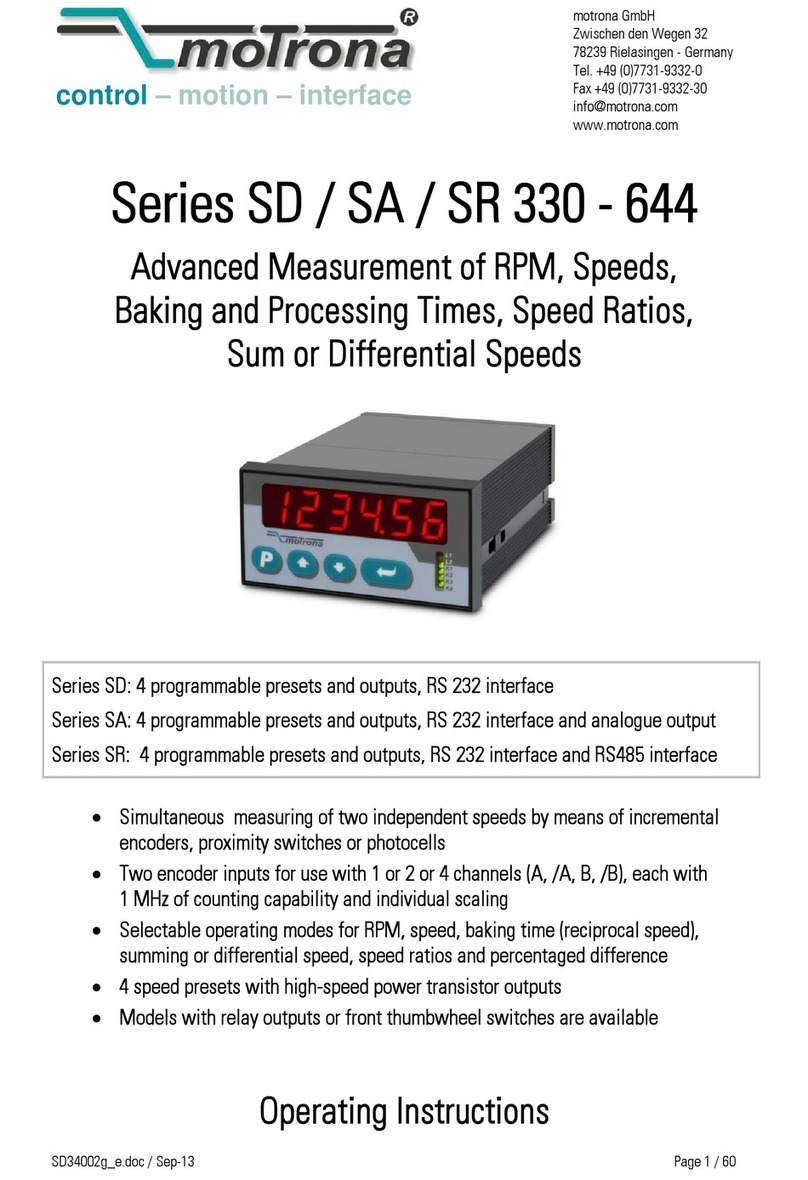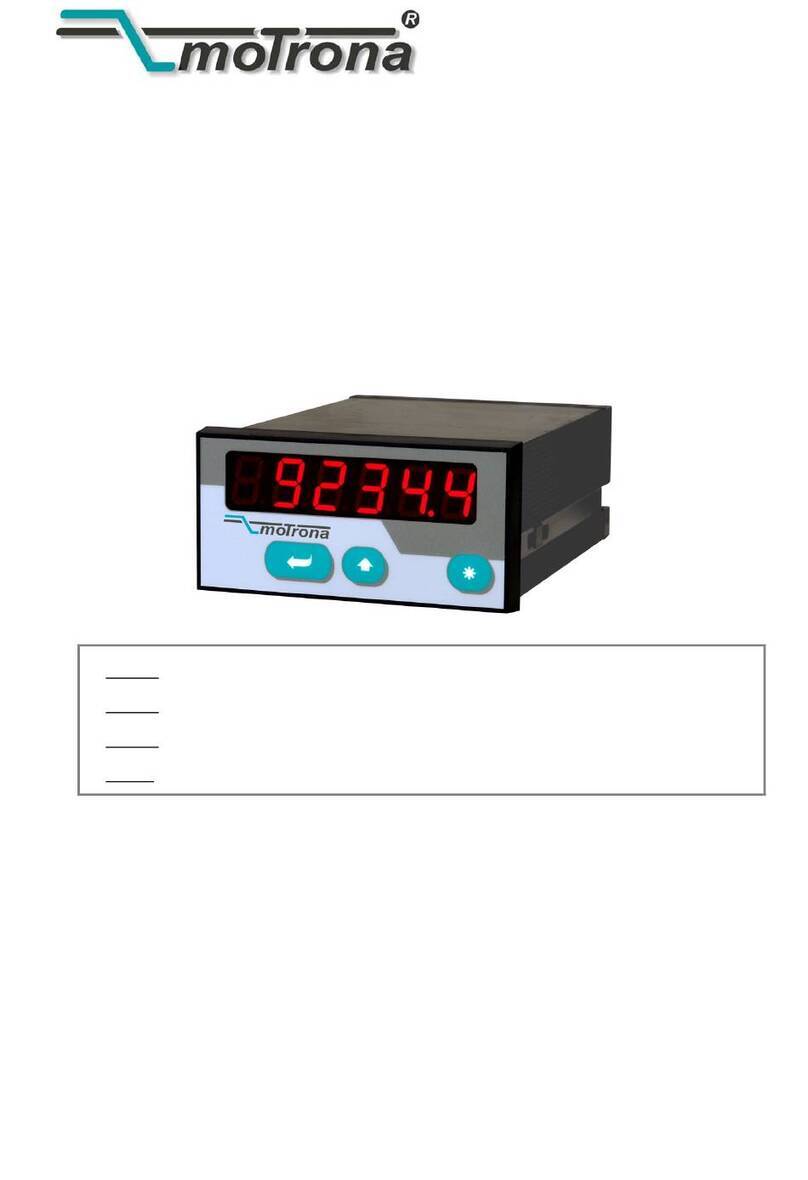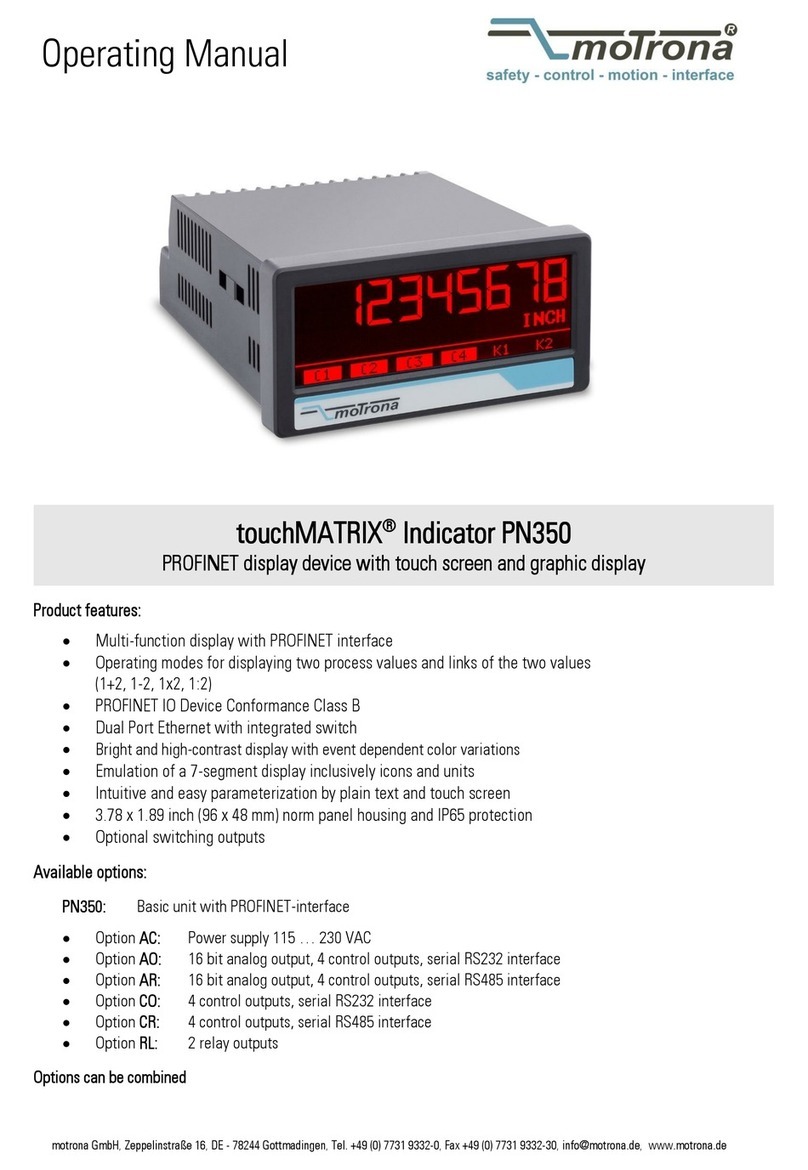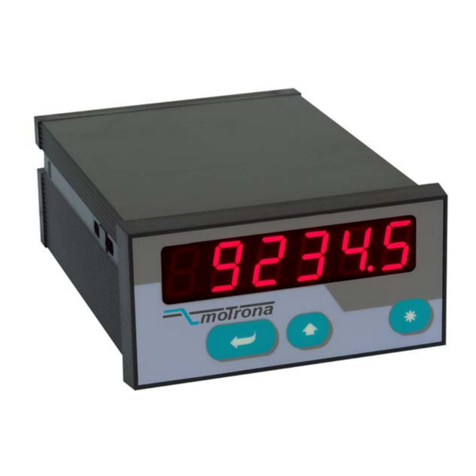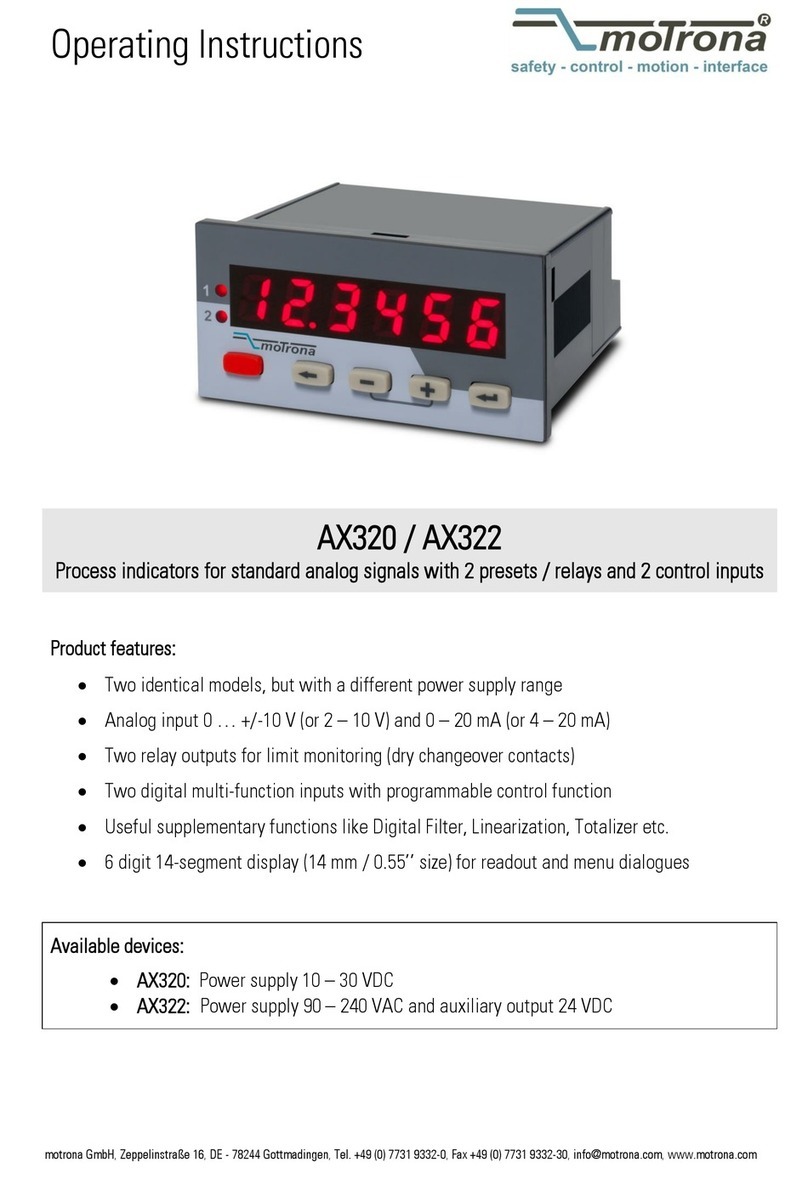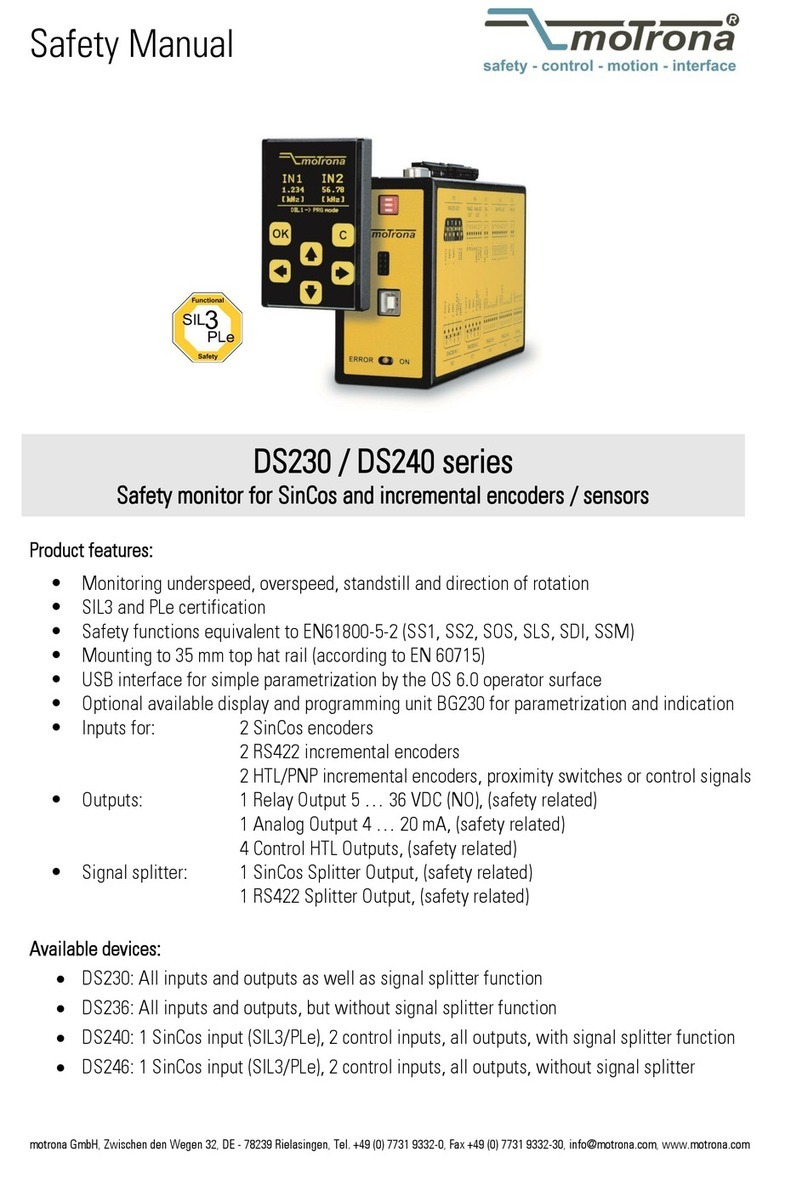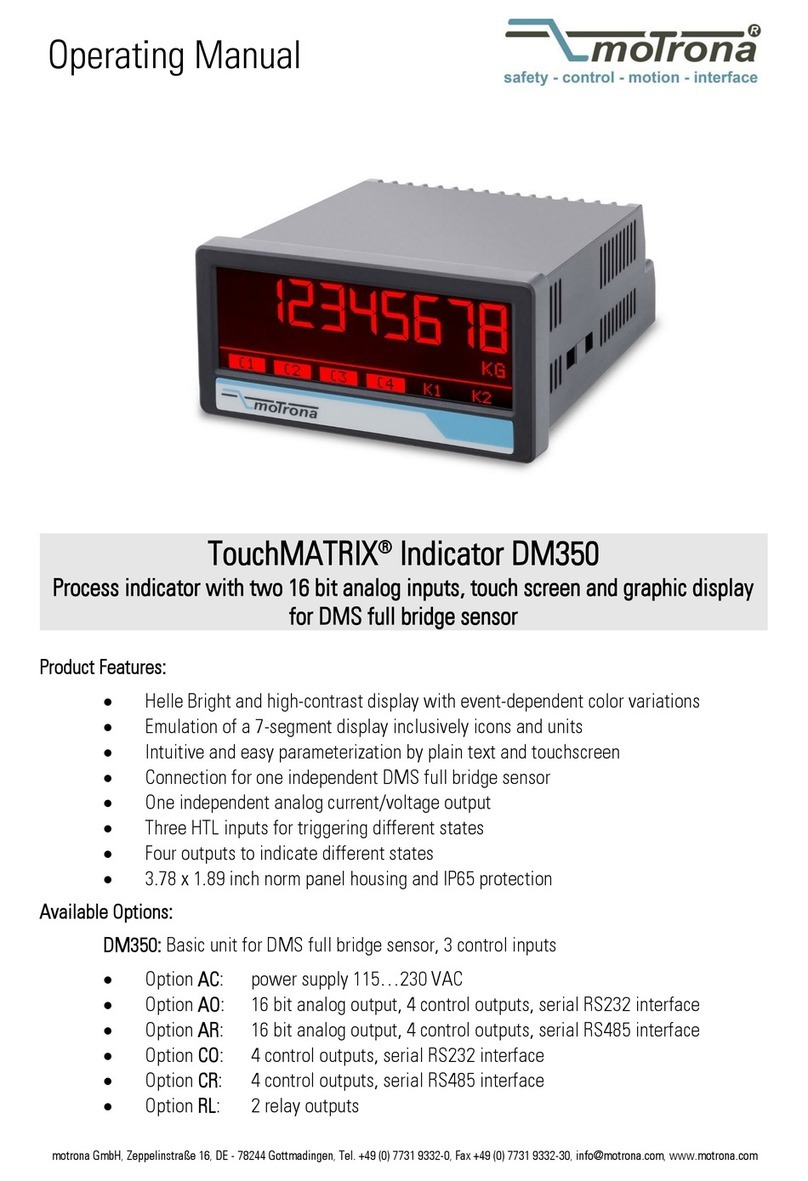Ms640_02b_oi_e.docx / Sep-22 Page 3 / 54
Table of Contents
1. Introduction and Application .................................................................................................................4
2. Electrical Connections...........................................................................................................................5
2.1. Connection Diagram .....................................................................................................................5
2.2. Terminal Assignments..................................................................................................................6
2.3. Power Supply................................................................................................................................7
2.4. Auxiliary Outputs for Encoder Supply ..........................................................................................7
2.5. Impulse Inputs for Incremental Encoders.....................................................................................8
2.6. Control Inputs 1 –4 ......................................................................................................................9
2.7. Logical Inputs Login1 - 6...............................................................................................................9
2.8. High Speed Transistor Outputs Out 1n - Out 4n (n = normal) and Out 1s - Out 4s (s = safe) ....9
2.9. Forced-Guided Safety Relays Rel.1s - Rel.4s.............................................................................10
2.10. Serial Interface ...........................................................................................................................11
3. Relevant Process Data and Setpoints..................................................................................................12
3.1. Available Actual Values .............................................................................................................12
3.2. Available Setpoints ....................................................................................................................13
3.3. Available Criteria for Combination of Switching Events ...........................................................13
3.4. Generation of an Output Signal .................................................................................................15
3.5. Indication of Switching Functions..............................................................................................16
3.6. Operation of the Status Signals.................................................................................................16
4. Setup of the Unit by PC .......................................................................................................................17
4.1. PC connection .............................................................................................................................17
4.2. The Main Screen ........................................................................................................................17
4.3. PC Screen for Configuration of Switching Functions.................................................................19
5. Keypad Operation................................................................................................................................21
5.1. Normal Operation .......................................................................................................................21
5.2. General Setup Procedure............................................................................................................21
5.3. Change of Parameter Values on the Numeric Level..................................................................23
5.4. Code Protection against Unauthorized Keypad Access.............................................................24
5.5. Return from the Programming Levels and Time-Out Function ..................................................24
5.6. Reset all Parameters to Factory Default Values........................................................................24
6. Menu Structure and Description of Parameters ..................................................................................25
6.1. Summary of the Menu................................................................................................................25
6.2. Description of the Parameters ...................................................................................................27
7. Important Hints for the User................................................................................................................38
7.1. Description of keypad commands and remote commands........................................................38
7.2. Hints for Scaling of the Unit.......................................................................................................40
7.3. Example for the Function of the Digital Filter............................................................................42
7.4. Internal Self-Testing Functions of the Monitor .........................................................................43
7.5. Manual Release of a Self-Testing Cycle....................................................................................44
7.6. Behavior in Case of Error, Error Messages................................................................................45
7.7. Display of Switching Functions and Principle of Operation of Parameter "Target Display" ...46
7.8. Temporary Interruption of the Display of Switching States......................................................47
7.9. Operation of the Watchdog Function.........................................................................................47
7.10. Behavior of the Monitor after Power up ....................................................................................47
8. Serial Access Codes............................................................................................................................48
9. Technical Specifications .....................................................................................................................53
10. Dimensions .........................................................................................................................................54
